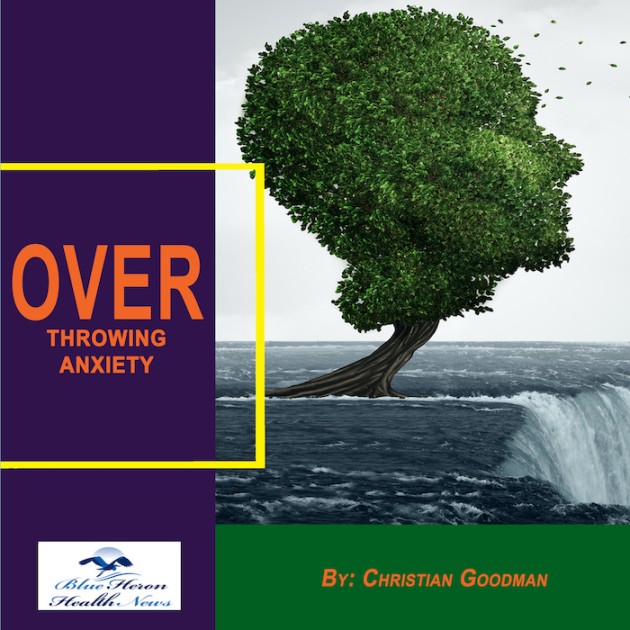
Overthrowing Anxiety™ This eBook includes a complete program to treat anxiety effectively. It guides you to learn the ways to find, understand, and accept the main cause of your anxiety and start using the techniques provided in it to treat the problem.
How can one practice assertiveness to reduce anxiety?
Assertiveness training can be a good way of reducing anxiety because it allows you to communicate your thoughts, needs, and limits clearly and respectfully, without passivity or intimidation. It also facilitates self-esteem and more healthy relationships, which can reduce symptoms of anxiety or stress. The following are some assertiveness practices to allow you to manage anxiety:
1. Understand the Difference Between Assertiveness, Aggression, and Passivity
Assertiveness: Communicating in a straightforward, respectful way without violating the rights of others.
Aggression: Expressing your needs by actively attacking or being hostile or offensive to others.
Passivity: Failing to express your wants or needs, typically at your own expense.
Being assertive means being direct and honest about your thoughts and feelings, but not aggressive or pushy.
2. Use “I” Statements
In expressing your needs or your feelings, “I” statements help to own your emotions and also make it less possible to come across as accusatory and confrontational. This can make the anxiety in the conversation decrease. For example:
Instead of: “You never listen to me.”
Say: “I feel unheard when I’m not given the chance to express myself.”
By expressing your own feelings and needs, you’re also less likely to get the other person on the defensive, so the conversation will be more likely to go smoothly.
3. Practice Saying No
One of the most stressful things is being unable to say no. Whether it’s work requests, social invitations, or personal requests, being unable to say no can cause burnout and stress. To become more assertive, try:
Setting boundaries: Recognize that it is okay to say no to something that doesn’t align with your values or priorities.
Start small: Say no in non-essential situations first, to build confidence, such as saying no to an invitation to something you do not want to go to.
Be polite but firm: You do not have to make a huge explanation or apology. A simple “No, thank you” will suffice.
The more you do it, the less anxious you’ll be about it.
4. Take Note of Your Body Language
Your body language can either support or undermine your assertiveness. Non-verbal cues like posture, eye contact, and voice tone are important for assertive communication. Do the following:
Maintain open body posture: Avoid crossing your arms or rolling your shoulders. Stand upright and relax your body.
Maintain eye contact: This shows that you’re confident and interested. If eye contact makes you uncomfortable, start by holding it for a few seconds and gradually longer.
Use a calm, relaxed voice: Speak clearly and at a moderate pace. Avoid speaking too quickly, which can suggest nervousness or indecision.
By matching your body language to your words, you’ll be more confident and in control of the interaction.
5. Practice Active Listening
Being assertive is also about listening to others, not just speaking. Active listening reduces conversation anxiety since it makes both you and the other individual feel heard and respected. To actively listen:
Maintain eye contact with the speaker.
React to what they are saying with verbal nods like “I understand” or “That makes sense.”
Clarify with questions if something is unclear, instead of assuming.
When you are listened to, you’ll feel less nervous and more in charge of the conversation.
6. Hold Realistic Expectations
Assertiveness is not always getting your own way; it’s expressing your needs in a way that respects you and others. To avoid disappointment and frustration, try:
Accepting compromise: Not every situation will allow you to get exactly what you want. Being open to finding middle ground can reduce anxiety.
Being patient with yourself: Assertiveness develops over time. Don’t expect yourself to be perfect immediately. Start with baby steps and gradually increase the level of assertiveness in your interactions.
7. Learning to Deal with Nervousness Before Conversations
Before those conversations that make you nervous, it might help to calm your nerves. Some techniques to apply before or during interactions include:
Deep breathing: Focus on slow, deep breaths to calm your mind and body.
Positive self-talk: Remind yourself that it’s okay to stand up for your needs and that you deserve to be listened to.
Visualization: Visualize the conversation flowing positively and yourself handling it assertively.
This will allow you to approach assertiveness with a calm, clear mindset.
8. Role-Playing and Practice
One of the best ways of developing assertiveness is by practicing it in a low-pressure, comfortable setting. Role-play assertive scenarios with a therapist or friend. This can:
Practice difficult conversations: Attempt saying no, asking for something, or setting a boundary in a comfortable setting.
Get feedback: Get tips on how to enhance delivery and approach.
The more you practice, the more assertiveness becomes second nature, and the less nervous you’ll be.
9. Seek Support and Feedback
If you find that practicing assertiveness still makes you anxious, attempt to get feedback from close family, friends, or a therapist. They can help you in:
Identifying areas to improve: If you’re not sure where you may be being too passive or aggressive, positive feedback can help you refine.
Increase confidence: Positive responses can help you feel more confident in your assertive behavior.
10. Start with Less Emotional Situations
If you are a beginner in the assertiveness practice, begin with less emotional situations where the stakes are not as high. For example:
Being assertive with a colleague or a close friend can be a good place to start before applying it to more difficult situations.
Conclusion
By asserting yourself, not only are you improving your communication skills, but you also reduce anxiety a lot by gaining control over your emotions and interactions. In the long term, this improves your self-worth and empowerment feelings, which naturally decrease anxiety.
Would you like some concrete examples or additional tips on how to assert yourself in a particular situation?
Outdoor activities have been quite therapeutic for anxiety and offer both physical and psychological benefits. Being in the outdoors and engaging in outdoor activities allows one to disconnect from the sources of stress, reduce anxiety levels, and improve overall well-being. The following are the key benefits:
???? 1. Lowers Stress Hormones
Nature exposure has also been discovered to lower the stress hormone cortisol levels in the body. Cortisol is a significant contributor to the body’s stress response, and lowering its levels can help alleviate anxiety and promote relaxation.
Outdoor activities, especially in green spaces, soothe the nervous system and lower the body’s fight-or-flight response.
???? 2. Increases Physical Activity
One of the most effective ways of reducing anxiety is exercise, and outdoor activities make it possible for one to engage in physical exercise while simultaneously benefiting from nature’s therapeutic effects.
Activities like walking, hiking, cycling, swimming, and so on trigger the release of endorphins, natural chemicals that improve mood and reduce pain and anxiety.
Regular physical activity can enhance overall fitness and make individuals feel more control over their bodies, which can soothe anxiety symptoms.
???? 3. Enhances Mood and Mental Health
Outdoor activity has been shown to enhance overall mood, reduce rumination, and enhance feelings of well-being. This is particularly important for anxious people, as rumination over worries can worsen anxiety.
Sunlight stimulates serotonin in the brain, which can enhance mood and reduce anxiety or depression.
The calming effect of Nature relaxes the mind and encourages mindfulness, allowing individuals to be in the here and now instead of dwelling on anxieties.
???? 4. Encourages Mindfulness and Relaxation
Outdoor activities have a tendency to induce a state of mindfulness, a practice where you give attention to the present moment without judgment. Being in the outdoors cultivates mindful awareness because you are in nature, and it allows you to disconnect from concerns.
A walk in the park, birds singing, or the wind blowing can all induce mindfulness and relaxation.
Even such minor things as slow breathing while in nature can soothe the mind and body, slow down the heart rate, and induce relaxation.
???? 5. Improves Sleep Quality
Getting sunlight during the day helps to regulate your circadian rhythm, making it easier to fall asleep at night and improving sleep quality overall. Good sleep hygiene is crucial for anxiety management because poor sleep exacerbates symptoms.
Outdoor exercise can also exhaust the body in a positive manner, which promotes sounder and deeper sleep.
???? 6. Provides a Healthy Distraction
Outdoor activity can serve as a distraction from anxiety. Whether one is walking in the community, swimming in a lake, or hiking in the forest, outdoor activity offers a chance to focus on the activity, not on anxiety.
Distractions can give the mind a break from incessant worrying thoughts, which can allow individuals to psychologically recharge and return to daily challenges with a clear mind.
???? 7. Solidifies Social Connections
Outdoor activities, especially group activities, offer the opportunity to engage with other individuals, which can be very helpful for those who are experiencing anxiety. Being in the company of others removes feelings of isolation and provides a sense of belonging.
Engagement in group activities like walking clubs, sports, or volunteering outdoors encourages bonding, support, and increases a sense of belonging and purpose.
???? 8. Creates a Sense of Control and Achievement
Physical activity, particularly outdoors, allows one to set achievable small goals (e.g., reaching the top of the hill, completing a run, or ending a hike). Achievement of these goals boosts self-esteem and provides a sense of accomplishment, which is therapeutic in anxiety management.
The sense of control that is offered by doing activities such as kayaking, rock climbing, or even simply taking a run gives the person a sense of strength and capability.
???? 9. Improves Cognitive Function
Outdoor activities, especially those involving complex movement or problem-solving, stimulate brain function. Such stimulation to the brain can act as a cognitive reset, enabling the person to override the negative thought processes of anxiety.
Exposure to natural environments has also been shown to improve attention, focus, and cognitive flexibility, which can help reduce the experience of overwhelm.
???? 10. Increases Sense of Connection to Nature
Being in natural environments can help get individuals reconnected to the world around them, building a sense of gratitude and peace. Such a connection has a tendency to build greater emotional resilience and perspective on life difficulties, reducing the intensity of anxious feelings.
Nature offers a reminder of the larger picture, which can serve to put worries into perspective and reduce the influence of anxiety-inducing stressors.
✅ Best Outdoor Activities to Lessen Anxiety
Walking or hiking in nature, parks, or at the beach
Cycling in quiet, scenic areas
Yoga or tai chi in nature (at the beach, for example, or in a park)
Swimming in natural bodies of water, such as lakes or oceans
Gardening or community garden projects
Birdwatching or wildlife observation
Jogging or running in a quiet outdoor setting
Summary: Outdoor Activities for Anxiety Relief
Outdoor physical activity stimulates endorphins and reduces stress.
Sunlight and nature stabilize mood and increase mental clarity.
Mindfulness and relaxation techniques in nature induce mental relaxation.
Social interaction and group activities provide emotional support.
Distraction from anxious thoughts and feelings of accomplishment improve self-esteem.
Spending time outdoors not only helps with anxiety reduction but also with general mental, emotional, and physical well-being.
Would you like more specific advice on specific outdoor activities that are most beneficial for anxiety reduction, or advice on how to incorporate them into your routine?
Overthrowing Anxiety™ This eBook includes a complete program to treat anxiety effectively. It guides you to learn the ways to find, understand, and accept the main cause of your anxiety and start using the techniques provided in it to treat the problem.
